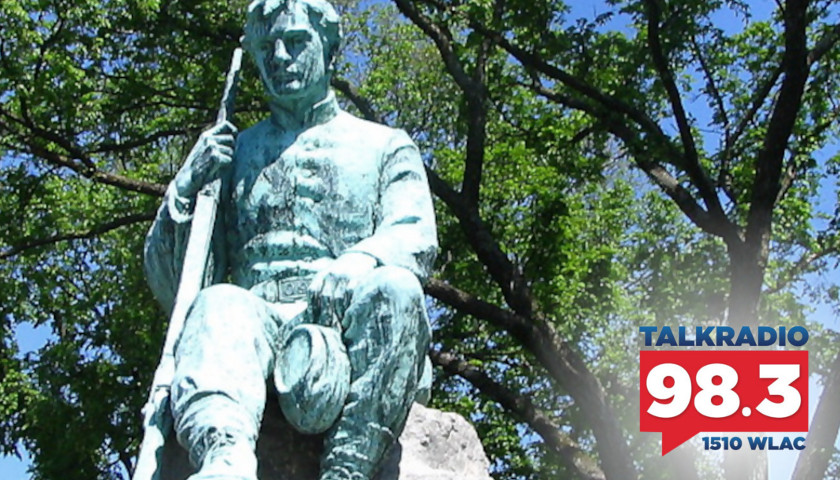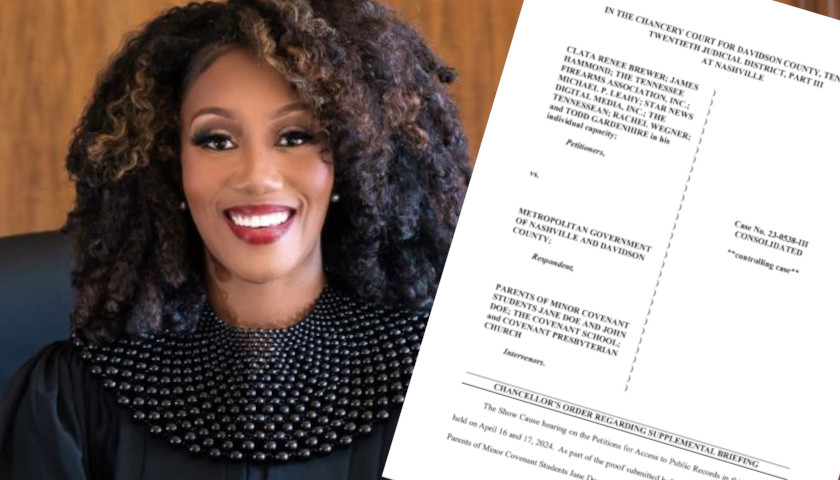Live from Music Row Monday morning on The Tennessee Star Report with Michael Patrick Leahy – broadcast on Nashville’s Talk Radio 98.3 and 1510 WLAC weekdays from 5:00 a.m. to 8:00 a.m. – host Leahy welcomed the original all-star panelist, Crom Carmichael in the studio.
During the third hour, Leahy and Carmichael discussed the history of statues in Tennessee and how some of those well-known figures represent slavery yet later in their lives made amends. The duo agreed that the purpose of statues and public art is there to remind us of our history and that legislative and public discussions would be the best way to convene decisions and not mob rule.
(Amazing Grace plays)
Leahy: John Newton was a slave trader in 18th century England. He was captain of a slave ship. There is a statue of him in Ireland. Should that statue be torn down because in the 18th century he was a slave trader?
Carmichael: Well, according to the left it should absolutely be torn down.
Leahy: The thing about John Newton is he had a conversion experience after he was a slave trader. After he was a captain of slave ships and realized that it was absolutely immoral and wrong. And he wrote that song we just listened to, Amazing Grace.
Carmichael: He also became a monk and he spent the rest of his life trying to make amends for the sins of his early life.
Leahy: And he went on and was very influential in helping William Wilburforce lead the abolition of the slave trade in England. Just a few months before he died in 1807 the United Kingdom, Great Britain abolished the slave trade.
Carmichael: So here you have a person who committed terrible acts against humanity. Who then realized that he had committed terrible acts against humanity and spent the rest of his life trying the best he could make amends. But even if you listen and read the lyrics of the song which I encourage everyone to do because there are multiple verses in it.
He makes it clear that he can never make up for what he did. He took a vow of poverty and spent the rest of his life doing the best he could. Amazing Grace is about the grace of God. Even though he can’t be redeemed on earth, he can be redeemed by God.
Leahy: But there is a statue of him at a park called the Amazing Grace Country in Donegal, Ireland. The left would say, well, tear that statue down because he was once a slave trader! But I think the purpose of statues and public art is to remind us of our history. To remind us of the arc of life. And the fact that people are imperfect and look at how they handled it back then.
Carmichael: It wasn’t until John Locke wrote Two Treatises of Government that maintained that when human beings are born they are given rights by God that no institution can take away. Until that time our world had historically been a world run by what you can call dictators or call them tyrants.
Leahy: Monarchs.
Carmichael: Kings
Leahy: Good kings, bad kings.
Carmichael: That’s right. You were ruled by a higher authority that had absolute authority.
Leahy: Over you.
Carmichael: And that was the way of the world. That was slavery in its own way until fairly recently. And we’re literally talking 250 or actually…
Leahy: Recent in human time. No question about it.
Carmichael: Yes.
Leahy: Let’s take John Newton as one example of somebody who changed his ways. Now, Nathan Bedford Forrest, I think this is a proper public discussion. But the discussion ought to be, his bust is there in the state capitol. The state legislature thought it would be a good idea in the 1920s to put it there. Nathan Bedford Forrest is clearly a controversial figure in American history.
I don’t have any problem with having a discussion at the legislature and the public about whether or not that bust ought to be there. But I think there ought to be a complete discussion about why the bust is there and what his life is about.
As you probably know Crom, towards the end of his life, he was a slave trader and got rich trading slaves. He was probably the best cavalry commander in American military history and a daring commander here in Tennessee.
But when he surrendered he surrendered. He dedicated himself subsequently to the preservation of the union. They asked him to become the first President of the KKK and when it became violent he told them to disband it. He was actually in the latter part of his life before he died in 1877 he changed his ways and attitudes towards Black people.
Carmichael: Talk about it. I don’t know the history of this. Talk about the original founding and what was the premise and how long did it stay non-violent.
Leahy: It was founded in Pulaski, Tennessee in about 1867. People can correct me as I’m doing this a little bit from memory. The original founding idea was to protect the rights of confederate veterans and their families. That was the original founding.
They asked Nathan Bedford Forrest to come on board as the president and he agreed. But then groups of the KKK became violent towards Black people and he didn’t like that and he ordered them to disband. They did disband for a period of time at his direction in 1869. There is a whole discussion about Nathan Bedford Forrest. I think I’ve given an accurate overview of it.
I don’t think there is any reason that it’s a bad idea to have a public discussion about whether or not his bust belongs there. But I think you also ought to add if the portraits of the governors’ in Tennessee. Prentice Cooper who ran in 1958 had been governor. Had been governor during WWII. The father of John Cooper and father of Jim Cooper, he ran on a segregationist campaign in 1958. OK, let’s apply the same standard that we apply to Nathan Bedford Forrest and to everybody up there.
Carmichael: Did Prentice Cooper ever change? Or did he remain a segregationist throughout his whole life?
Leahy: His main claim to fame and prominence was governor of Tennessee during World War II. In 1958 he ran on a segregationist lost against Al Gore, Sr. but to my knowledge, I don’t think he ever changed. He passed away in 1969.
Carmichael: So he ran for the Senate?
Leahy: US Senate.
Carmichael: And then Al Gore himself…
Leahy: Al Gore, Sr. supported it.
Carmichael: He voted against the Civil Rights Act. So any statues of Al Gore…
Leahy: Al Gore, Sr.
Carmichael: Should be taken down.
Leahy: In a democratic constitutional republic, have these discussions. But don’t let the mob do it.
Carmichael: Or you could have a great big sign over Al Gore’s statue that says, last Tennessee Senator to vote for segregation.
Leahy: There you go.
Carmichael: It would be right there.
Leahy: I would favor putting a sign that historians review to put it in context. I would leave all of the statues up there personally.
Carmichael: There you go. I agree.
Listen to the full third hour here:
– – –
Tune in weekdays from 5:00 – 8:00 a.m. to the Tennessee Star Report with Michael Patrick Leahy on Talk Radio 98.3 FM WLAC 1510. Listen online at iHeart Radio.








